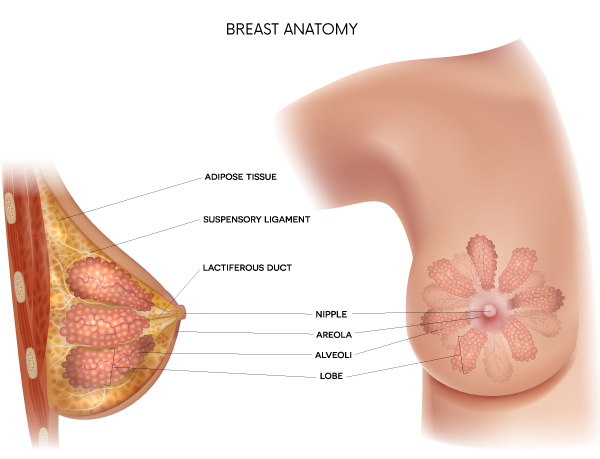Breast milk – this is how it works
Early in pregnancy, the body begins to prepare for breastfeeding. Breasts change, blood flow increases, and the milk ducts grow. Here we explain how breast milk is produced, what colostrum is, and how breastfeeding is regulated by the baby’s needs.
Read time: 2 m
Verified by Ingela Ågren
Certified Midwife
How breast milk is produced
In the breast, there are small sacs called alveoli. These contain the cells that produce milk. Milk travels through the milk ducts to the nipple. Breast size does not affect how much milk can be produced – small and large breasts are equally effective.

Colostrum – the baby’s first food
As early as the third month of pregnancy, the body starts producing colostrum. It is rich in nutrients and contains more proteins, minerals, vitamins, and antibodies than mature milk. Colostrum strengthens the baby’s immune system in the first days. Gradually, it transitions to mature milk, which contains more fat and lactose – perfect for the baby’s growth.
How milk production is regulated
The hormone prolactin is released when the baby sucks at the breast. The more the baby feeds, the more milk is produced. The body adapts to the baby’s needs – a smart supply-and-demand system.
Let-down reflex – when the milk flows
The hormone oxytocin causes milk to be pushed from the alveoli through the ducts. This is called the let-down reflex and may feel like tingling or pressure in the breast. Some notice it clearly, others not at all. Stress, worry, or pain can inhibit the reflex – calm surroundings, skin-to-skin contact, warmth, and gentle massage can help.
Practical breastfeeding tips
- Keep a calm environment, preferably with skin-to-skin contact.
- Drink water and rest – your own energy affects breastfeeding.
- Your partner can support you by creating a calm environment and helping practically.
- Seek help from a midwife or breastfeeding clinic if you have problems or concerns.
Read also: The first days of breastfeeding – getting started
Verified by Ingela Ågren
Certified Midwife
More from Preggers
Hundreds of related articles, podcasts & more waiting for you in the Preggers app.
Download Preggers today.

